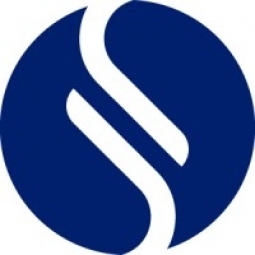Customer Company Size
Large Corporate
Region
- Europe
- America
- Asia
Country
- Germany
Product
- SpheraCloud Advanced Risk Assessment
Tech Stack
- Web-based risk software
Implementation Scale
- Enterprise-wide Deployment
Impact Metrics
- Productivity Improvements
- Digital Expertise
Technology Category
- Platform as a Service (PaaS) - Data Management Platforms
Applicable Industries
- Chemicals
Applicable Functions
- Quality Assurance
Services
- System Integration
- Training
About The Customer
BASF is the world's largest chemical producer, committed to being a leader in environmental protection and social responsibility. The company was founded in 1957 and is headquartered in Ludwigshafen, Germany. It generates a revenue of €59 million and employs over 110,000 people. BASF has a well-defined process for managing environmental, health, and safety risks, but the tools they were using for documentation were decentralized and inconsistent.
The Challenge
BASF, the world’s largest chemical producer, was using decentralized tools like Word and Excel to document process hazards. As a result, documentation was inconsistent and data extraction was cumbersome. Gathering strategic insights required experienced staff to review long, 300-page reports. The company had limited visibility of risk across the global organization, which was a significant challenge.
The Solution
BASF chose SpheraCloud Advanced Risk Assessment to standardize its processes across the organization and gain more visibility of risk. The company began implementing Sphera’s Advanced Risk Assessment (ARA) with a single, standardized template for process hazard analysis. Within nine months, 1,600 team members across Europe, Asia, and the Americas were trained to use the template. Standardized risk studies flowed in from around the world, and BASF used Sphera to build a centralized knowledge base of enterprise-wide risk. The newfound visibility helped managers address action items in a timely manner and improve compliance efficiency. BASF also began using ARA to simplify its risk revalidation process, enabling teams to allocate resources in advance.
Operational Impact

Case Study missing?
Start adding your own!
Register with your work email and create a new case study profile for your business.
Related Case Studies.

Case Study
Honeywell - Tata Chemicals Improves Data Accessibility with OneWireless
Tata was facing data accessibility challenges in the cement plant control room tapping signals from remote process control areas and other distant locations, including the gas scrubber. Tata needed a wireless solution to extend its control network securely to remote locations that would also provide seamless communication with existing control applications.

Case Study
Advanced Elastomer Systems Upgrades Production
In order to maintain its share of the international market for thermoplastic elastomers AES recently expanded its Florida plant by adding a new production line. While the existing lines were operating satisfactorily using a PROVOX distributed control system with traditional analog I/O, AES wanted advanced technology on the new line for greater economy, efficiency, and reliability. AES officials were anxious to get this line into production to meet incoming orders, but two hurricanes slowed construction.
Case Study
Wireless GPS Tracking & Security Monitoring
Enhancing the security of hazardous freight and ensuring compliance with Homeland Security’s Transportation Security Administration mandate that all trains carrying chemicals capable of creating a toxic inhalation condition are equipped with on-board safety monitoring systems.

Case Study
Field Device Asset Management For Chemical Company in China
Chinese chemical subsidiary of multinational corporation serves customers throughout the world. Sales offices and research and technology centers are strategically located to provide rapid response to customer requests. Just two workers were assigned to maintain thousands of intelligent instruments in three production units, so they could do little more than react to device issues as they appeared. This costly maintenance method inevitably led to unexpected downtime when a critical instrument failed. Plant management recognized the need to change from reactive to predictive maintenance for all assets, including instruments and control valves, but help was needed in implementing such a technology-based initiative.

Case Study
Industrial Workforce Mobility for Improved Safety & Operations
Huntsman Corporation, a global manufacturer and marketer of differentiated chemicals, undertook an aggressive program to eliminate injuries, product defects, and environmental releases at their Port Neches facility. Termed “Project Zero”, this program required a completely mobile solution to empower operations and maintenance personnel to capture defects, track work progress and make process and safety related decisions in real-time.








